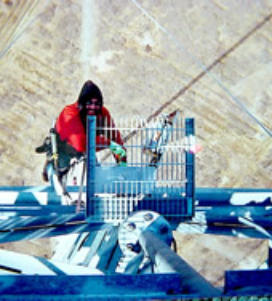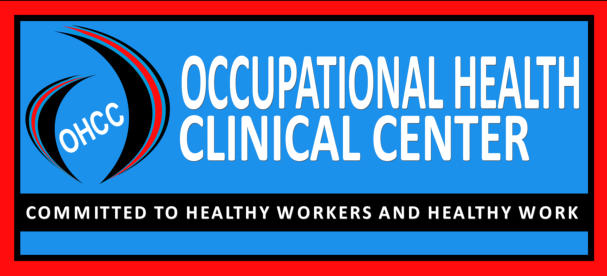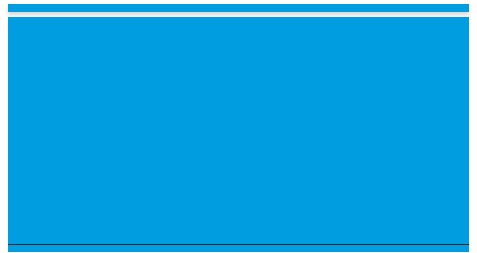
2019 © OCCUPATIONAL HEALTH CLINICAL CENTER / 6712 BROOKLAWN PARKWAY, SUITE 204 / SYRACUSE / NY / 13211
PHONE: 315-432-8899 / FAX: 315-431-9528 / EMAIL: CNYOHCC@UPSTATE.EDU

THE WORK OF THE INITIATIVE
1.
Identifying the dead and wounded: We keep up with worker fatalities via the news media, online sources industry publications,
state government fatality data, OSHA reports.
2.
Connect with survivors directly: That includes both workers who survived incident and failures (equipment, compliance),
workers who witnessed incident, or surviving family members.
3.
Listen to and learn from initial accounts: Not only facts about immediate causes, but the context and culture of the work;
pressures on crews; looking into any possible structural concerns. We talk with investigators (OSHA and police), reporters, first
responders, if possible, online research about the company, broadcast historians, or radio engineers and the FCC.
4.
Create occasions for the sharing of those accounts: Speak at gatherings where individuals or family members were directly
affected by a fatality, or meet with people who actually witnessed a death
5.
Create a mechanism for the ongoing engagement of workers' perspectives on health and safety that are persistent and vigorous.
Such a mechanism would also inform workers of their rights.
6.
Develop policy recommendations on safety standards to inform law makers, engineers, industry decision makers, statisticians,
regulators, and workers themselves.
7.
Develop grassroots and worker advocate training to spot and document abuses, compliance failures, imminent dangers and
pressure regulatory enforcement and the strengthening of standard.
8.
Engage workers in activity that helps to set a research agenda for safe equipment, structures, and processes. This would include
workers themselves learning more about relevant health and safety standards in other countries, and comparing them to what
exists in the U.S.
Wally Reardon, Project Coordinator
(315) 298-2312 or (315) 432-8899
wallyj16@gmail.com
https://www.facebook.com/groups/towerclimberprotectionproject/
WORKSHOP ON TOWER CLIMBER SAFETY AND INJURY PROTECTION
The Federal Communications Commission and the Department of Labor's Occupational Safety and Health Administration hosted this
workshop to explore issues surrounding tower climber safety, injury prevention, and fatalities involving work on communications
towers. The workshop included panel discussions on factors contributing to the high rate of injuries and fatalities and best practices
to ensure tower climber safety and prevention of injuries and fatalities.
Wally Reardon featured at 31:10 min
WORKERS AT HEIGHTS SAFETY AND
HEALTH INITIATIVE
Wally Reardon began climbing towers in 1992, until injuries forced an end to his climbing in 2002. Since then, he has kept close ties to the industry gaining trust and credibility. He has challenged the industry use of free-climbing (climbing towers while not connected to prevent falls), an illegal practice used to speed-up work, that has claimed many lives. He has interviewed those who have survived serious injury and surviving family members who lost loved ones. In 2010, Reardon won one of the nation's highest occupational health and safety awards for grassroots activism. Problem: In fast-growing tower industry, workers are still getting seriously hurt or dying from incidents that are both foreseeable and largely preventable. This occurs despite OSHA regulations regarding 100% tie-off and industry-touted safety claims about its trainings and crew conduct in the field.



2019 © OCCUPATIONAL HEALTH CLINICAL CENTER / 6712 BROOKLAWN PARKWAY, SUITE 204
/ SYRACUSE / NY / 13211
PHONE: 315-432-8899 / FAX: 315-431-9528 / EMAIL: CNYOHCC@UPSTATE.EDU

WORKERS AT HEIGHTS SAFETY AND
HEALTH INITIATIVE
Wally Reardon began climbing towers in 1992, until injuries forced an end to his climbing in 2002. Since then, he has kept close ties to the industry gaining trust and credibility. He has challenged the industry use of free-climbing (climbing towers while not connected to prevent falls), an illegal practice used to speed-up work, that has claimed many lives. He has interviewed those who have survived serious injury and surviving family members who lost loved ones.
THE WORK OF THE INITIATIVE
1.
Identifying the dead and wounded: We keep up with
worker fatalities via the news media, online sources
industry publications, state government fatality data,
OSHA reports.
2.
Connect with survivors directly: That includes both
workers who survived incident and failures (equipment,
compliance), workers who witnessed incident, or
surviving family members.
3.
Listen to and learn from initial accounts: Not only facts
about immediate causes, but the context and culture of
the work; pressures on crews; looking into any possible
structural concerns. We talk with investigators (OSHA
and police), reporters, first responders, if possible,
online research about the company, broadcast
historians, or radio engineers and the FCC.
4.
Create occasions for the sharing of those accounts:
Speak at gatherings where individuals or family
members were directly affected by a fatality, or meet
with people who actually witnessed a death
5.
Create a mechanism for the ongoing engagement of
workers' perspectives on health and safety that are
persistent and vigorous. Such a mechanism would also
inform workers of their rights.
6.
Develop policy recommendations on safety standards to
inform law makers, engineers, industry decision makers,
statisticians, regulators, and workers themselves.
7.
Develop grassroots and worker advocate training to spot
and document abuses, compliance failures, imminent
dangers and pressure regulatory enforcement and the
strengthening of standard.
8.
Engage workers in activity that helps to set a research
agenda for safe equipment, structures, and processes.
This would include workers themselves learning more
about relevant health and safety standards in other
countries, and comparing them to what exists in the
U.S.
Wally Reardon, Project Coordinator
(315) 298-2312 or (315) 432-8899
wallyj16@gmail.com
https://www.facebook.com/groups/towerclimberprotectionp
roject/
WORKSHOP ON TOWER CLIMBER SAFETY AND INJURY
PROTECTION
The Federal Communications Commission and the Department
of Labor's Occupational Safety and Health Administration
hosted this workshop to explore issues surrounding tower
climber safety, injury prevention, and fatalities involving
work on communications towers. The workshop included
panel discussions on factors contributing to the high rate of
injuries and fatalities and best practices to ensure tower
climber safety and prevention of injuries and fatalities.
Wally Reardon featured at 31:10 min

In 2010, Reardon won one of the nation's
highest occupational health and safety
awards for grassroots activism.
Problem: In fast-growing tower industry,
workers are still getting seriously hurt or
dying from incidents that are both
foreseeable and largely preventable.
This occurs despite OSHA regulations
regarding 100% tie-off and industry-
touted safety claims about its trainings
and crew conduct in the field.
































